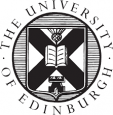Enter OTP



South Bridge, United Kingdom

South Bridge, United Kingdom

Cost Of Living

Undergarduate Fees

Undergraduate Fees International Students

Post Graduate Fees

Post Graduate Fees International Students
The English biologist, geologist, and naturalist Charles Robert Darwin is well-known for his contributions to evolutiona... View More
The English biologist, geologist, and naturalist Charles Robert Darwin is well-known for his contributions to evolutionary biology. His theory that all life forms share a common ancestry is now widely acknowledged and regarded as a foundational idea in science. He presented his scientific hypothesis that this branching pattern of evolution was the consequence of a process he named natural selection, in which the competition for survival has an impact akin to that of artificial selection in selective breeding, in a joint presentation with Alfred Russel Wallace. Darwin was honoured by being buried in Westminster Abbey and has been regarded as one of the most important people in human history. View Less
The first usable telephone was patented by Alexander Graham Bell, a Canadian-American engineer, scientist, and inventor ... View More
The first usable telephone was patented by Alexander Graham Bell, a Canadian-American engineer, scientist, and inventor of Scottish descent. In 1885, he was also one of the founders of the American Telephone and Telegraph Company. Bell's later years were characterised by numerous additional inventions, such as his pioneering work in hydrofoils, optical telecommunications, and aeronautics. As the second president of the National Geographic Society from 1898 to 1903, Bell also had a significant impact on the organisation and its publication. View Less
The most well-known contributions of Scottish philosopher, historian, economist, and essayist David Hume are his profoun... View More
The most well-known contributions of Scottish philosopher, historian, economist, and essayist David Hume are his profoundly influential systems of metaphysical naturalism, philosophical scepticism, and empiricism.Hume attempted to develop a naturalistic science of man that looked at the psychological underpinnings of human nature, starting with A Treatise of Human Nature (1739–40). Hume came to the conclusion that all human knowledge comes exclusively from experience, following John Locke in dismissing the possibility of intrinsic concepts. This puts him in the same category as empiricists like George Berkeley, John Locke, Francis Bacon, and Thomas Hobbes. View Less
The Scottish dramatist and author Sir James Matthew Barrie, 1st Baronet, is most known for writing Peter Pan. Born and r... View More
The Scottish dramatist and author Sir James Matthew Barrie, 1st Baronet, is most known for writing Peter Pan. Born and raised in Scotland, he later relocated to London, where he penned a number of popular plays and books. He was inspired to write about a baby boy who has magical adventures in Kensington Gardens by the Llewelyn Davies boys there. He went on to write Peter Pan, or The Boy Who Wouldn't Grow Up, a 1904 West End "fairy play" about an ageless boy and a regular girl named Wendy who have adventures in the fantastical world of Neverland. View Less
British author, pundit, and socialite Philippa Charlotte Matthews. She is Catherine, Princess of Wales's younger sister.... View More
British author, pundit, and socialite Philippa Charlotte Matthews. She is Catherine, Princess of Wales's younger sister. Middleton, who was raised in Bucklebury and was born in Reading, Berkshire, went to Marlborough College before earning a degree in English literature from the University of Edinburgh. View Less
Former Scottish racer and track cyclist Sir Christopher Andrew Hoy competed for Scotland at the Commonwealth Games and G... View More
Former Scottish racer and track cyclist Sir Christopher Andrew Hoy competed for Scotland at the Commonwealth Games and Great Britain at the Olympic and World Championships. Hoy has won six Olympic titles and eleven world titles. View Less
The below information is required while
completing the university application :
For the University of Edinburgh the application requirements are different for different countries. Candidates are requested to clic here to know more about the requirements: https://www.ed.ac.uk/studying/international/country
Know more



For his groundbreaking research on artificial intelligence (AI), Professor Geoffrey Hinton, who completed his doctoral studies at the University, was granted a Nobel Prize. He received the award for his work on artificial neural networks, which served as the foundation for many of the techniques used in so-called generative AI.
Dr. Richard Henderson, an honorary Doctor of Science and physics alumni, shared the prize with Professors Joachim Frank of Columbia University in New York, USA, and Jacques Dubochet of the University of Lausanne. They received the prize for creating cryo-electron microscopy, which has made it possible to image biomolecules in solution at great resolution.
Early in the 1970s, Michael Rosbash, a professor at Brandeis University in Waltham, USA, conducted research in Edinburgh. His research on circadian rhythms—the 24-hour cycle that regulates sleeping, waking, and other fundamental bodily functions—has earned him recognition as one of three scientists. Professor Michael Young of Rockefeller University and Professor Jeffrey Hall of Brandeis also share the award with Professor Rosbash.
The Higgs boson, which describes how fundamental particles gain mass, was predicted by Professor Peter Higgs, who was awarded the Nobel Prize for his efforts. The 2012 discovery of the anticipated particle at CERN's Large Hadron Collider validated his idea.
Sir Joseph received a prize for his efforts to lessen the role that nuclear weapons play in international politics and, eventually, to eradicate them. He served as the University's Montague Visiting Professor of International Relations from 1975 to 1976. The Pugwash Conferences, an international body that aimed to lessen the risk of armed conflict and find answers to risks to global security, especially those related to nuclear war, shared his prize.
The Smart Wheelchair prototype was created in 1987 by Paul Nisbet of the University of Edinburgh's CALL Scotland for kids with severe and numerous disabilities who couldn't use standard mobility aids. The Smart Wheelchair is an electric wheelchair equipped with unique sensors and a computer-based controller. This gives kids with disabilities new chances to interact, learn, explore, and play, which helps them become somewhat mobile on their own. At the 1998 BETT (British Education and Teaching Technology) Show, the Smart Wheelchair won the Gold Medal Award for "Technology for Special Educational Needs," and judges praised it for "leaping beyond what was previously thought possible."
Under the £13.5 million Alvey program, the University received £3 million in 1984 to create the first speech-driven word processor for the Plessey Company. Under the direction of Dr. John Laver, Director of the Speech Technology Centre, this multidisciplinary research project would unite researchers from the University's departments of electrical engineering, linguistics, and artificial intelligence.
In order to offer guidance, instruction, and consulting services in the area of microelectronics, the University of Edinburgh merged with Heriot-Watt University in 1981 to form Integrated Micro Applications Ltd (Inmap Ltd), an independent commercial firm. Additionally, Heriot-Watt University's Computer Application Services and the University of Edinburgh's Wolfson Microelectronics Institute would both market the microelectronic hardware and software produced by INMAP Ltd.
Professor Ken Murray created the first synthetic vaccine to prevent hepatitis B in 1980. His cutting-edge genetic engineering research made it possible to create a safe, efficient vaccination to fight the infection as well as a technique for accurately diagnosing those who have been afflicted. The US biotechnology company Biogen N.V. was granted a licence to use this vaccination and testing equipment. The company is now among the top players in the biopharmaceutical sector thanks to this invention, which has also brought in over £40 million in royalties. Professor Murray founded the Darwin Trust in 1983 as a charity to promote natural science education and research, and he gave his portion of the royalties from the Hepatitis B vaccine to the organisation.
In order to create high performance liquid chromatograph (HPLC) equipment and column packings, the Wolfson Liquid Chromatography Unit formed strong ties with the Shandon Southern Instrument Company in 1974. The joint project first created a full HPLC equipment, demonstrating a production prototype in 1976, along with a variety of innovative microparticulate (silica gel) packaging materials. This device's creation had numerous uses in biochemistry and medical diagnosis, and some of these capabilities are just now being added to HPLC systems that are in use today. As the microparticulate column packing materials were further developed, "Hypercarb," a completely new porous graphite carbon packing material for HPLC columns, was created.
Professor David Brock, a biochemist at the University of Edinburgh, declared in 1972 that elevated alpha feta-protein (AFP) in amniotic fluid during pregnancy was linked to open neural tube malformations in the foetus, including spina bifida. One of the first researchers to use AFP markers for prenatal screening was Professor Brock. He assessed the levels of AFP in the amniotic fluid from foetuses including spina bifida or anencephaly. The majority of people with spina bifida and all anencephaly cases had noticeably higher AFP levels. This finding was seen as a turning point in the development of prenatal diagnosis.
The University created FREDDY, the first automated assembly robot that combines perception and action. Built in the Department of Artificial Intelligence, FREDDY could be programmed to put together basic artefacts, like a toy car, from an arbitrary pile of parts and could identify a wide range of items. The FREDDY robots' autonomous object assembly made them the precursors of the assembly robots now widely seen in industrial facilities.

















Embark on your educational journey with confidence! Our team of admission experts is here to guide you through the process. Book a free session now to receive personalized advice, assistance with applications, and insights into your dream school. Whether you're applying to college, graduate school, or specialized programs, we're here to help you succeed.
